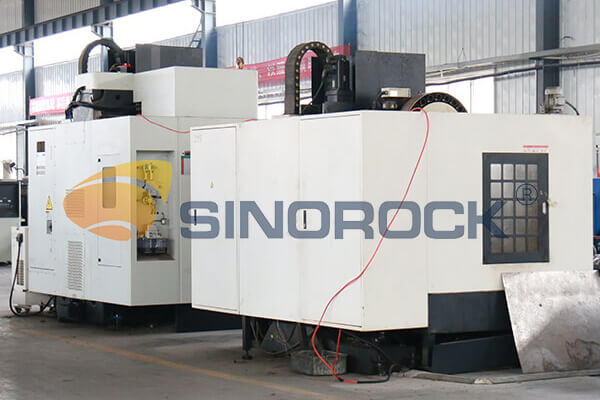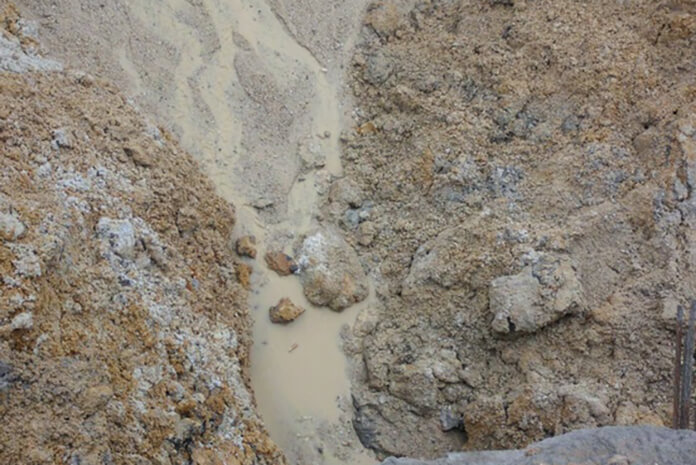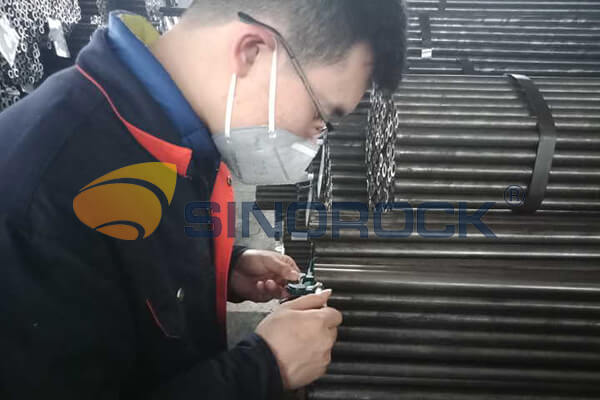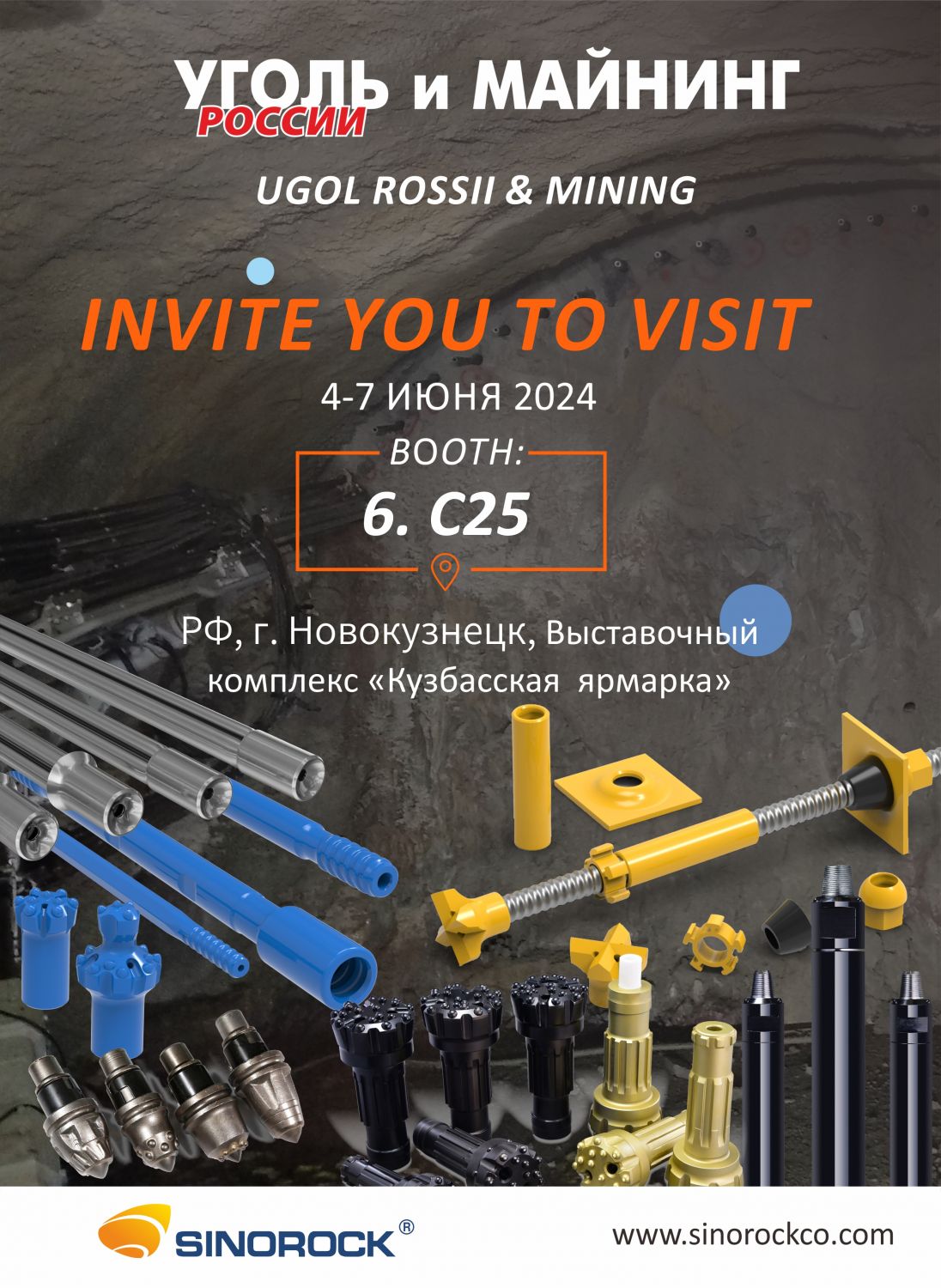Four Common Problems in Micropiles Design
Time:2024-01-19From:sinorock View:
I. Introduction
Micropiles, initially introduced in the 1950s for the reinforcement of historic structures, have evolved into a crucial element in various construction projects. Their applications range from foundation support to slope stabilization, showcasing unique characteristics that distinguish them from traditional foundation methods. This article explores the definition, common specifications, construction methods, and challenges associated with micropiles.
II. What are Micropiles?
A. Definition and Characteristics of Micropiles
Micropiles, often referred to as mini-piles or pin piles, are slender deep foundation elements specifically designed to transfer loads from a structure to competent load-bearing strata. These specialized piles comprise high-strength steel reinforcement and grout, which are installed through drilling methods into the ground. Micropiles typically adopt pressure grouting, a process that allows the pile and surrounding soil to be tightly combined, thereby cementing and reinforcing the virtual soil and bearing layer under the pile tip. Through this technique, pressure grouting significantly enhances the mechanical properties of the soil surrounding the pile and increases the bearing capacity of a single pile. Micropiles typically have smaller diameters compared to traditional piles, typically ranging from 100 to 300 millimeters (4 to 12 inches). Their length can vary depending on the design requirements and site conditions, often ranging from a few meters to tens of meters.

B. Function and Structural Mechanism of Micropiles
Micropiles primarily function to transfer the structural loads of buildings and other structures to more stable soil layers or bedrock. They are commonly used to support foundation underpinning, bridge foundations, slope stabilization, and retaining walls. Micropiles serve as load-bearing elements, relying on a combination of end-bearing and skin friction to support vertical and horizontal loads. This makes them well-suited for supporting structures with high loads or in areas with limited access.
III. Applications of Micropiles in Construction
A. Slope Stabilization
Micropiles are effective in stabilizing slopes by providing reinforcement against gravitational forces, thereby mitigating potential landslides.
B. Foundation Support
Micropiles offer a reliable solution for foundation support in areas with challenging soil conditions or limited access, enabling the construction of structures in complex environments.
.png)
C.Underpinning and Retrofitting
Micropiles can be employed for underpinning existing structures, enhancing their load-carrying capacity and stability. They are particularly useful when dealing with older or historically significant structures that require reinforcement.
IV. Four Common Problems in Micropiles Design
A. About the Slide-Resistant Effect of Micropiles
In order to verify the role of micropile in landslide prevention and control engineering, the micropile research group of Chang'an University has successively carried out several sets of model tests. Single pile test, single row pile test and pile group test were carried out.
Experimental details
The landslide model used in the test is composed of loess artificially rammed and filled, and the sliding surface is artificially preset. In the test, the micropile single-pile test and the micro-pile group test were used respectively. Through the test, after setting the micro-piles at the foot of the slope, in order to cause the slope to slide, a larger load must be added to the top of the landslide, which shows that the addition of micro-piles improves the sliding resistance of the landslide.
Arrangement of micropiles
A total of 5 rows of micropiles were arranged in the experiment, the pile spacing was 0.6m, the row spacing was 0.15m, the length of a single pile was 4m, and the pile diameter was 60mm. During the test, the pressure was continuously applied on the top of the slope until the micropile was damaged, and the loading amount reached 48kPa in total. It shows that the sliding resistance effect of micropiles is obvious. The data analysis in the test shows that setting the micropile before the landslide can increase the stability coefficient of the landslide model from 1.0 to 1.27.
B. About the Reinforcement of Micropiles
If micropiles are used as compression members, it is reasonable to reinforce them according to the pile core. In landslide control projects, micropiles are used as lateral force members to bear the bending moment. While using pile core reinforcement, the reinforcement should be arranged at the centroid of the flexural section. Theoretically, the reinforcement rods at this time do not bear the bending moment. Therefore, in the landslide control project, the micropiles should be reinforced with steel cages or steel pipes as reinforcement materials.
C. About the Number of Rows of Micropiles
During the sliding process of soil landslides, the stress on the micropiles is uneven.
The force on the first row is the largest and gradually decreases on the rear rows.
In terms of stress, it is best to arrange the piles in 3 to 5 rows, and connect the top with connecting beams to give full play to the space function of the pile group. If there are more than 5 rows, it is recommended to increase the spacing of micropiles, which is better than increasing the number of rows of micropiles.
For rock landslides, especially hard rock, a uniform distribution is a good design plan since the landslide thrust distributed to each row of micropiles is roughly equal, The number of rows of piles can be determined according to the force value of landslide thrust. The arrangement on the plane is preferably no less than 3 rows.
D. About the Parameter Design of Micropiles
The parameter design content of micropiles includes pile spacing, pile length, the row number of piles, water-cement ratio, etc.
(1) Pile spacing
According to theoretical analysis and engineering experience, it is suggested that the pile spacing can be considered as 3 to 10 times the pile diameter. When the rock and soil conditions are good, the value takes the upper limit, and when the rock and soil conditions are poor, takes the lower limit.
(2) Pile length
Considering the bending resistance of the micro-pile, when the pile body reaches a certain length, increasing the length of the pile has little significance for slide-resistant. However, considering the stress state of the pile body after cracking, it is recommended that the length-to-diameter ratio of the embedded section should generally not be greater than 12:1.
(3) The number of rows of piles
In the design of micro piles, it is suggested that the number of rows of micropiles arranged in parallel should be 3 to 5 rows.
(4) Water-cement ratio
If the grouting process is adopted, it is recommended that the water-cement ratio be controlled at 0.35~0.4.
V. Benefits of Using Self-Drilling Rock Bolts as Micropiles in Construction
A. Cost-Effectiveness Compared to Traditional Foundation Methods
Self-drilling rock bolts, when used as micropiles, offer a cost-effective alternative to traditional foundation methods. Their installation efficiency and reduced need for extensive excavation contribute to overall project savings.
B. Reduced Environmental Impact and Disruption
The micropiles minimizes environmental impact and disruption compared to conventional foundation techniques. This eco-friendly aspect aligns with sustainable construction practices.
C. Increased Structural Integrity and Load Capacity
Micropiles, particularly those incorporating self-drilling rock bolts, enhance structural integrity and load capacity. Their ability to effectively distribute loads and resist various forces makes them a reliable choice in challenging construction scenarios.
D. Flexibility in Adapting to Various Soil Conditions
Micropiles, utilizing self-drilling rock bolts, exhibit flexibility in adapting to diverse soil conditions. This adaptability ensures their applicability in a wide range of construction projects, from soft soil to hard rock.
VI. Conclusion
Micropiles stand out from other construction methods due to their unique design and specific applications, providing substantial benefits in terms of stability, load-bearing capacity, and environmental considerations. They have the potential to effectively address many common construction challenges, making them a valuable asset in modern engineering.
As a professional ground support expert, Sinorock brings years of experience and expertise to slope reinforcement and foundation support projects. Please feel free to reach out to Sinorock at sinorock@sinorockco.com for any questions or requirements related to micropiles and self-drilling anchor bolts.
latest news
-

- 3 Crucial Factors That Impact the Quality of Self-Drilling Hollow Bolts
- Time:2025-01-26From:This Site
- As we all know, the quality of the self-drilling hollow bolts is vital to the whole project. It determines if the project is safe for the people in future use. Then, what will affect the quality of the self-drilling hollow bolts?
- View details
-

- Self-Drilling Anchor Bolt Construction in Complex Geological Slope
- Time:2025-01-24From:This Site
- During construction, Self-drilling hollow anchor bolt integrates drilling, grouting and anchoring functions, which significantly improves drilling efficiency. And under the action of pressure pump, the grouting in the rock strata and voids is full, which ensures the grouting thickness and anchoring effect.
- View details
-

- How Does Self-drilling Rock Bolt Drill in Quicksand Geological Condition?
- Time:2025-01-19From:This Site
- This in-depth guide explores how self-drilling rock bolts function in quicksand geological conditions, covering the challenges, construction methods, and best practices for ensuring effective anchorage in unstable, fluidic soil layers.
- View details
-

- Quality Control: the Vital Factor of A SDA Bolt Factory
- Time:2025-01-09From:This Site
- Sinorock’s comprehensive quality control system, from supplier management to outgoing inspections, ensuring the highest standards for self-drilling anchor bolts in construction.
- View details
-
.png)
- International Women's Day with Strawberry-picking
- Time:2024-03-09From:This Site
- Marked the annual observance of International Women's Day, and to commemorate this significant event, Sinorock organized a special strawberry-picking event exclusively for its female employees.
- View details
-

- Celebrate the 74th anniversary of the founding of the People's Republic of China
- Time:2023-10-01From:This Site
- On October 1st every year, we observe the annual National Day, commemorating the birth of our beloved motherland.
- View details
-
.jpg)
- SINOROCK to Attend EXPOMINA PERÚ 2024 in Lima, Peru
- Time:2024-08-10From:This Site
- Sinorock to Attend EXPOMINA PERÚ 2024 in Lima, Peru
- View details
-
.jpg)
- SINOROCK to Participate in MINING AND METALS CENTRAL ASIA 2024
- Time:2024-08-08From:This Site
- SINOROCK to Participate in MINING AND METALS CENTRAL ASIA 2024
- View details
-

- SINOROCK Gears Up for UGOL ROSSII & MINING 2024 with Custom Mining Solutions
- Time:2024-05-15From:This Site
- SINOROCK is thrilled to announce its participation in the highly anticipated 32nd International Trade Fair for Mining Technology, UGOL ROSSII & MINING 2024. The event will take place at the Exhibition complex "Kuzbass Fair" in Novokuznetsk, Kemerovo region - Kuzbass, Russia, from June 4th to 7th, 2024.
- View details
 Download
Download 


